NEW AND USED
BUY, SELL & TRADE
RENT, OWN & FINANCE
USED 1/2 OFF REG. PRICE
SERVING ALL AREAS: (800)477-0248
LOCAL DELIVERY, SET-UP & SERVICE
%20(2).jpg) |
%20(2).jpg) |
%20(1).jpg) |
%20(1)%20(1)%20(1).jpg) |
| Local Delivery & Set-Up | Buy, Sell & Trade | Used 1/2 OFF | Rent, Own & Finance |
%20(1).jpg)
THE VERY BEST
WARRANTY IN THE INDUSTRY!
LIFETIME SERVICE COMMITMENT: (800)477-0248
VPL | VERTICAL PLATFORM WHEELCHAIR LIFT
LOWEST PRICES. PERIOD. NEVER UNDERSOLD
.jpg)
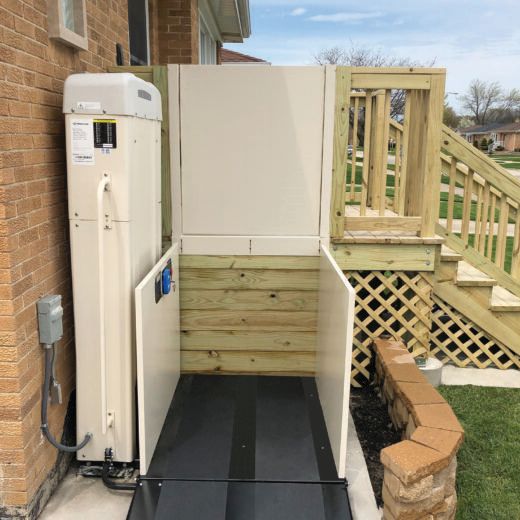

.jpg)
ALWAYS THE LOWEST PRICE!
PLEASE CALL (800)727-1954
LOCAL DELIVERY, SET-UP AND SERVICE
LIMITED LIFETIME WARRANTY ON ALL PARTS
FAMILY OWNED & OPERATED SINCE 1964
VPL | VERTICAL
PLATFORM LIFTS
MOBILE HOME PORCH LIFTS
WHEELCHAIR ELEVATOR LIFTS
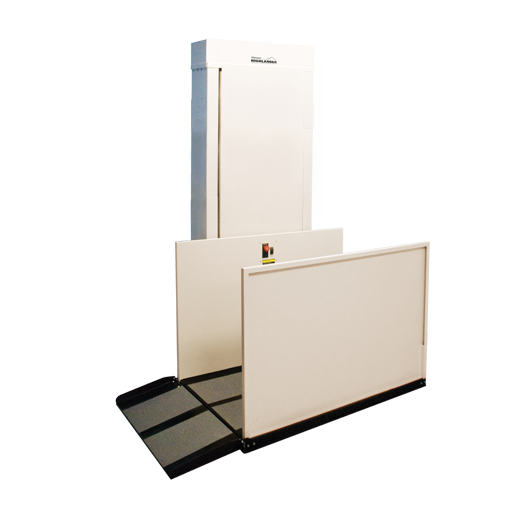



We have are own
In-Home Service and Parts Dept.
LIFETIME SERVICE COMMITMENT: (800)477-0248
If your Porch Stair Lift is ever in-operable,
We will always try to service as quickly as possible.
"Our 61 Years of Experience in the
Electric Homecare Products Industry
will mean the Right Porch Lift for you!"
%20(1).jpg)
PLEASE CALL FOR COMPLETE INFORMATION
AND PRICES ON ALL MODELS: 800-233-7382
VPL Vertical Platform Lifts often referred to as wheelchair lifts or porch lifts, serve as an accessible means of vertical transportation, acting as an alternative to ramps or traditional elevators, particularly over short distances (typically up to 14 feet). In commercial and public settings, VPLs must comply with the Americans with Disabilities Act (ADA) Commercial and Business and be independently operable, adhering to strict standards like ASME A18.1 for platform size, door operation, and safety features like power-operated gates and standby power if part of an accessible means of egress. While residential VPLs also follow safety codes like ASME A18.1 for private homes, they often have less stringent dimensional requirements and are not subject to the mandatory full ADA Commercial and Business compliance required for public access in commercial facilities, though they must still provide a safe and effective means for a mobility device user to change levels.
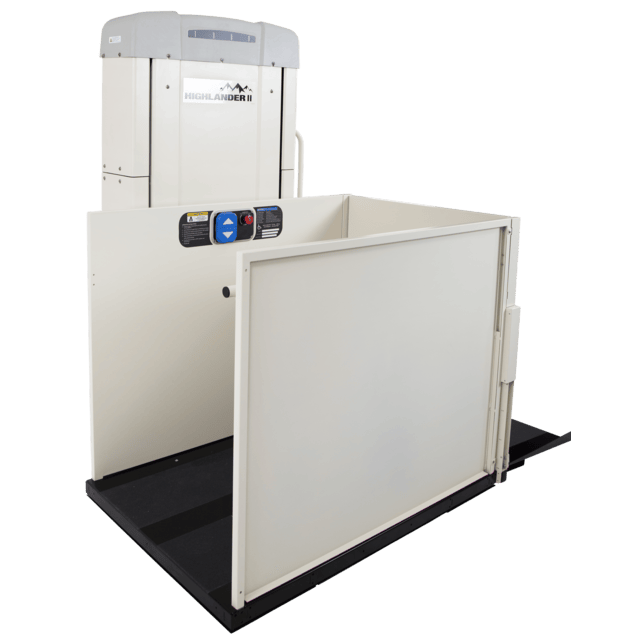
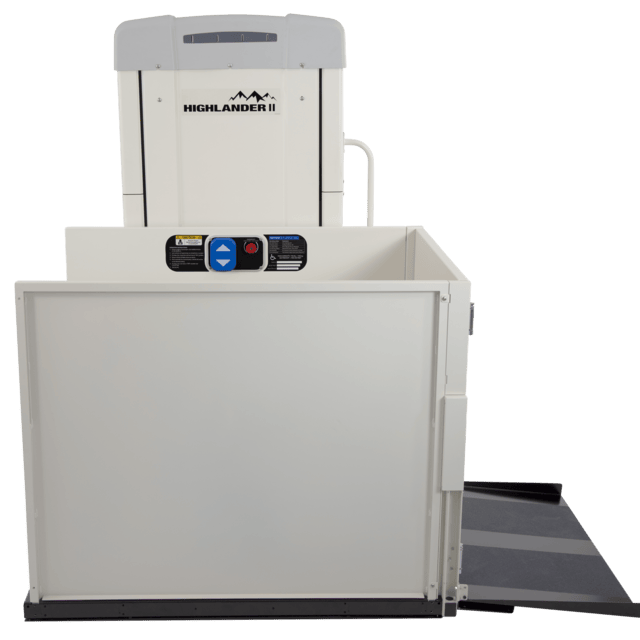
While a VPL platform lift is a free-standing unit, there are several common site prep considerations prior to installation. Because a concrete pad is required for a platform lift to create a proper approach for a wheelchair or scooter, there may be concrete work needed. In addition, there might be preparation needed for the landing gate to be installed at the top landing. Also, it may be necessary to run electricity to the location of the platform lift to power the lift or the battery charger.
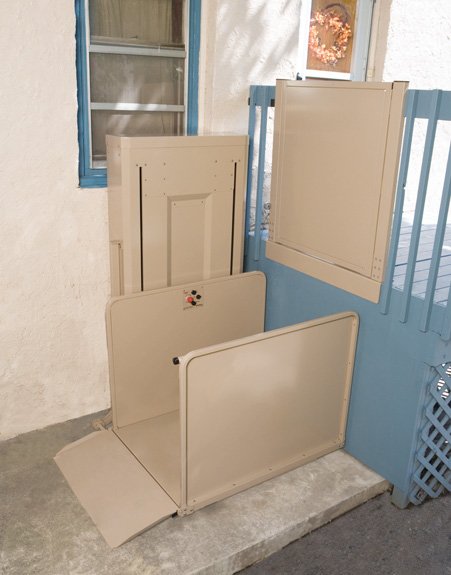
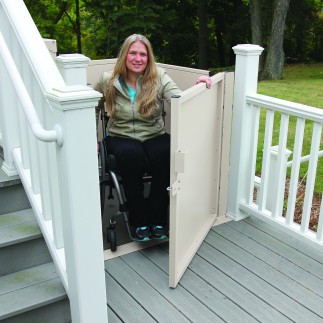
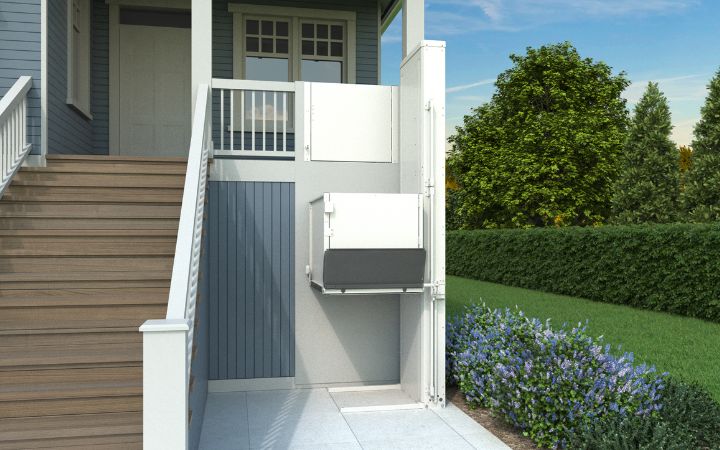
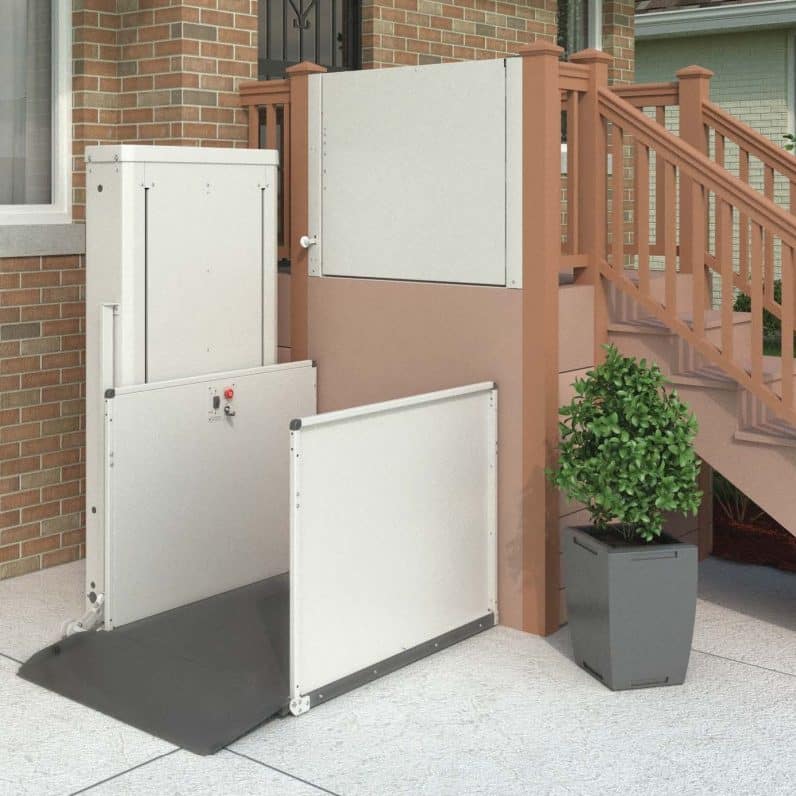
Like a small elevator, a platform lift gives vertical access to people using scooters or wheelchairs. Platform lifts are commonly used to provide access between the ground level and a porch or deck, and are considered a space-efficient solution in comparison to a ramp. By code, ramps need one foot of length for every one inch of rise. For example, a 12” rise would require a 12-ft ramp, or a 24” rise would require a 24-ft ramp. The long “runway” ramp system can be both unsightly and expensive. Platform Lifts are also considerably more cost-efficient than a residential elevator.VPL platform lifts feature a 750lb lift capacity and are available in heights up to 10 feet. Every platform lift includes the core components of a tower, a platform and a landing gate to protect the top landing.
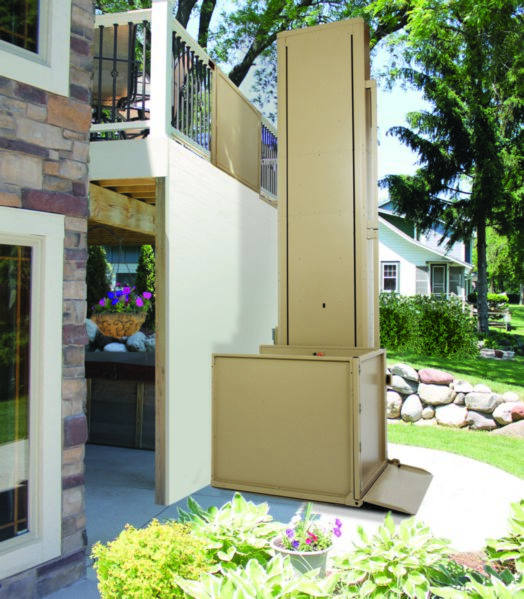
Operating a platform lift is easy. Just roll onto the platform and the lift will smoothly and quietly move to the next level with the push of a button. As the lift rises, the ramp automatically folds to create a safety barrier to stop a mobility device from unintentionally rolling off the platform. An optional platform gate is also available for an additional layer of safety.Once the platform lift reaches the top landing, just push open the top gate and exit. To travel back down, reverse the process. VPL offers residential wheelchair lifts with different platform sizes, exits available on multiple levels and a variety of other options. Call your local factory-trained VPL dealer today to learn more about how a platform lift can serve as a “mini-elevator” to help make your home more accessible.
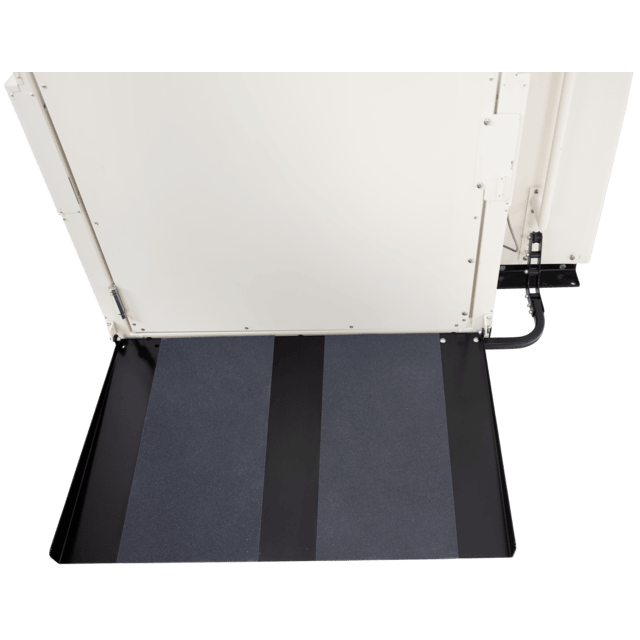
Ensure that any platform lift you put in your home has standard safety features:
Barrier to protect mobility device from rolling backward. When a user of a VPL platform lift rolls onto the platform and presses the button to engage the lift, the ramp will automatically fold up to create a safety barrier to stop the mobility device from rolling backward. Gain an additional layer of security with the addition of an optional platform gate. Gate/door at top landing to prevent falls from top. At the top landing, there should always be a landing gate or door to prevent someone from falling from the landing when the lift is in the lowered position. Obstruction safety sensors to identify crushing hazards. An obstruction safety sensor located under the platform of a platform lift gently stops if it encounters an object. This is vital to avoid crushing any object that may get under the platform when the lift is in the raised position.
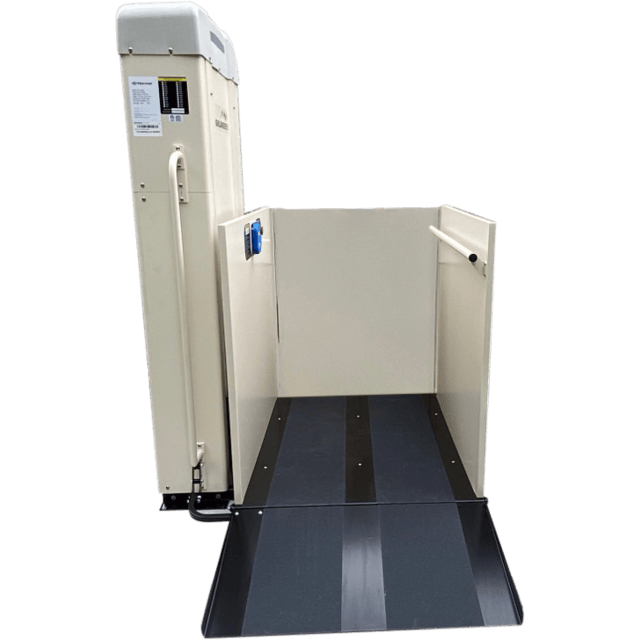
Although a platform lift is a freestanding piece of equipment, site preparation may be needed before the installation process can begin.
A platform lift must rest on concrete, so a concrete pad may need to be poured. In addition, a sidewalk may need to be added to create an appropriate “approach” path. A safety barrier gate is a core feature at the top landing of any vertical platform lift. Depending on the location, work may be needed to the surrounding area to allow for placement of the safety gate. Electricity is needed nearby that will either power the lift itself or the battery charger.
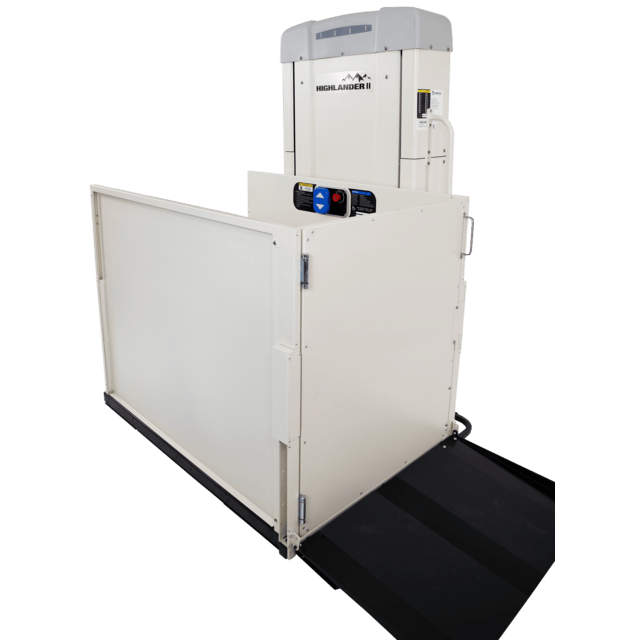
There are two ways in which a platform lift can be powered: household current (AC) or battery power (DC).
The most common method of providing power to your home platform lift (also known as a porch lift) is via a standard household outlet. Since you never have to worry about replacing batteries in the future, it results in an inexpensive method for total cost of ownership.Battery-powered platform lifts are considered a safer and more reliable solution since the lift will operate even if power is disrupted. Under normal use and circumstances, the platform lift batteries will last for several days after the loss of power. While factors such as frequency of use, weight lifted, height traveled and environment/climate can impact battery life, platform lift batteries will generally last several years. With a battery powered platform lift for your home, you have a high level of safety and security.
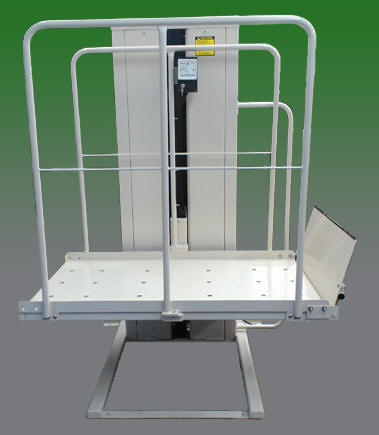
MAC'S PL50
Mobile Home Porch Lift
The MACS PL50
mobile home porch lift is a robust, residential
vertical platform lift engineered for everyday home use,
boasting a high lifting capacity of up to 750 lbs to accommodate
most electric wheelchairs and scooters.
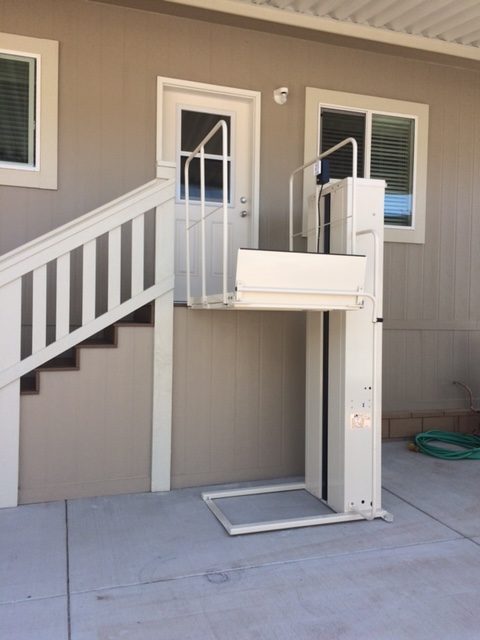
Commercial and Business VPL
Vertical Platform MACS Lift PL72
The MACS Lift PL72
is an all-weather vertical platform lift designed to provide safe and
independent access to homes with higher entryways, offering a maximum
standard lifting height of 72 inches (six feet)
compared to the PL50's 50 inches.